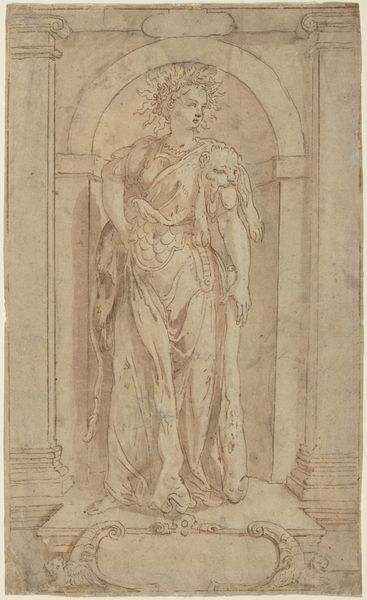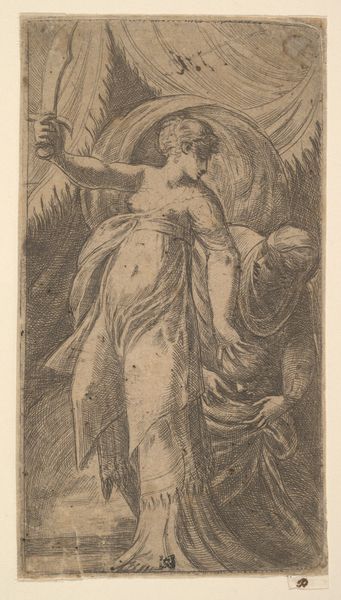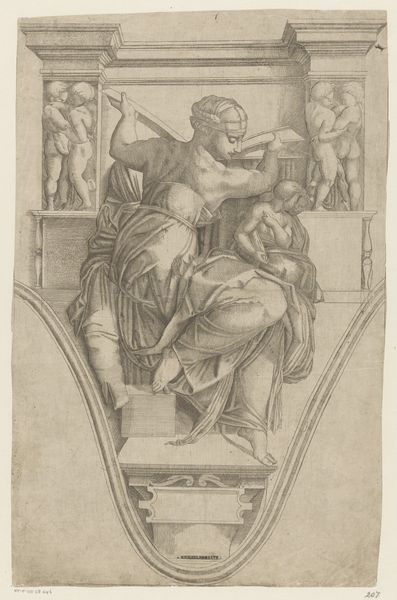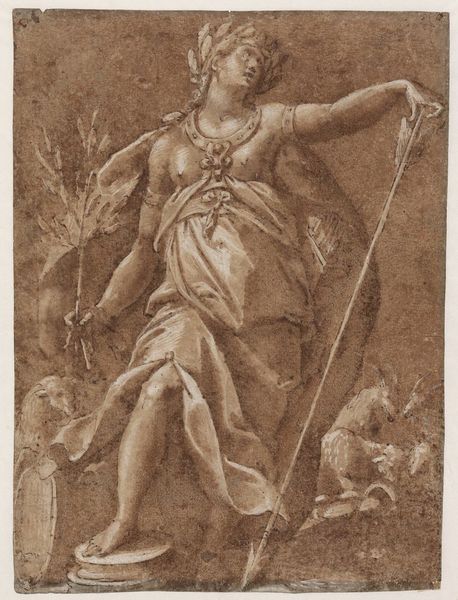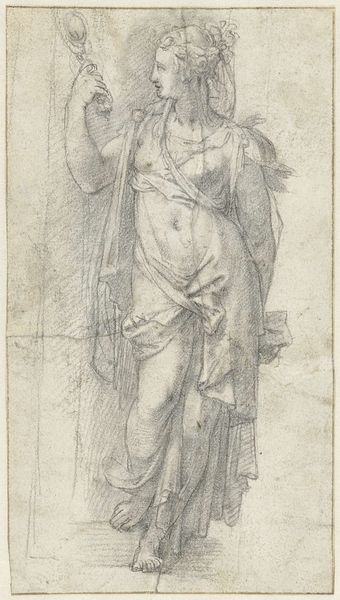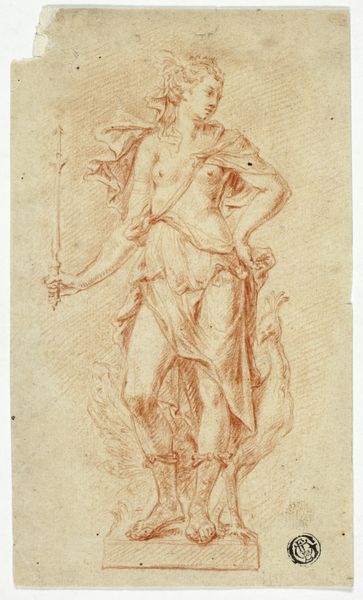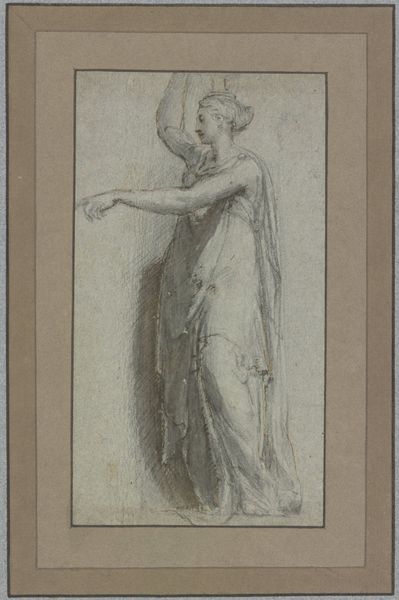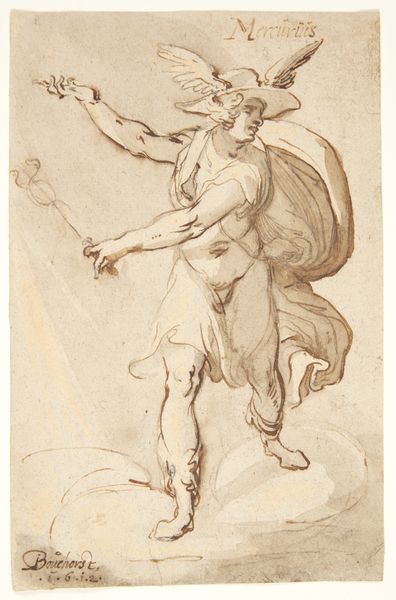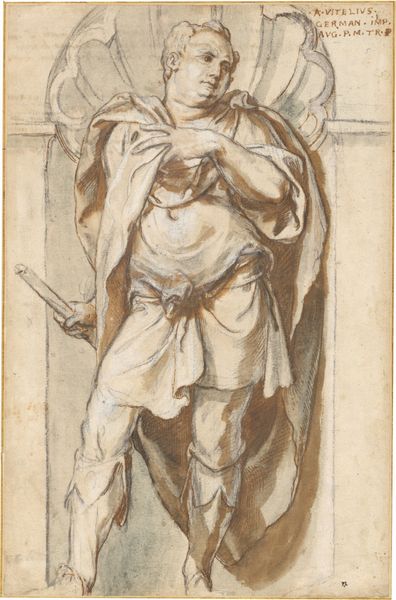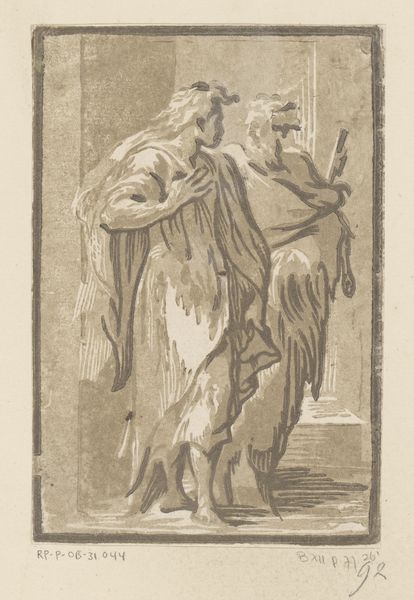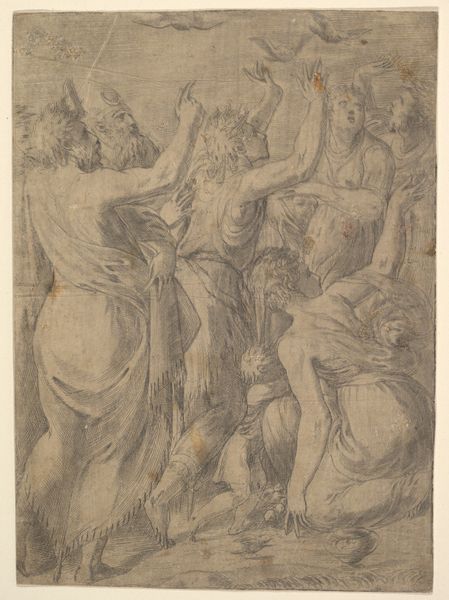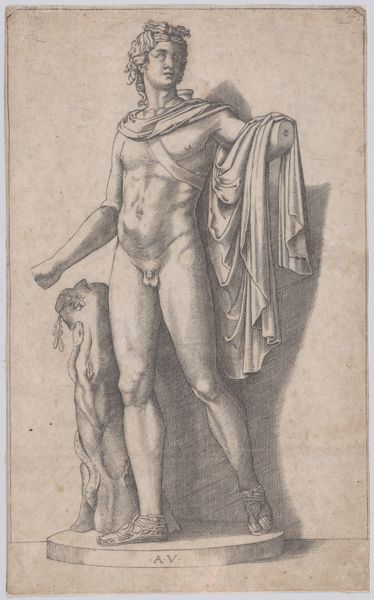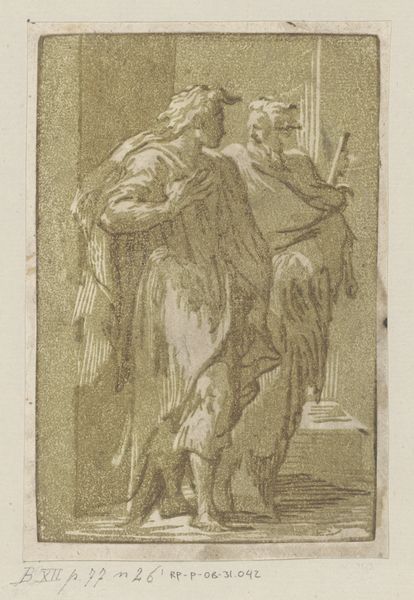
Female Allegorical Figure of Benignitas (Goodness), with Attributes of Abundance Standing in a Niche (recto); Architectural Sketches (verso) 1546 - 1570
0:00
0:00
drawing, print, paper, ink, architecture
#
portrait
#
drawing
#
allegory
# print
#
classical-realism
#
figuration
#
paper
#
11_renaissance
#
ink
#
history-painting
#
academic-art
#
italian-renaissance
#
architecture
Dimensions: Sheet: 16 9/16 x 9 15/16 in. (42.1 x 25.3 cm)
Copyright: Public Domain
Editor: This ink drawing on paper from Giorgio Vasari, titled "Female Allegorical Figure of Benignitas (Goodness), with Attributes of Abundance Standing in a Niche," was created between 1546 and 1570. The figure is so powerful, like she embodies the entire weight of the world! How do you interpret this work in relation to the Renaissance? Curator: I see this drawing as deeply entrenched in the humanist ideals of the Italian Renaissance. The female figure isn't just a portrait; she's an allegory. Consider how "Benignitas," or Goodness, is depicted: overflowing with abundance, her hand resting on a globe. It is a symbolic intersectional message. What does that pairing tell you about the social expectations placed on women in positions of power at that time? Editor: So, less about personal goodness and more about the goodness she provides for the state? Almost like, her personal virtue *is* her ability to facilitate prosperity? Curator: Precisely! Her worth becomes tied to her perceived ability to bring prosperity and stability. This also links back to contemporary discussions about labor, reproductive rights, and the objectification of women's bodies. Editor: It is kind of unsettling how her worth becomes inextricably linked to economic output. Curator: This unsettling feeling is precisely where the critical dialogue begins! Recognizing how these historical representations shaped – and continue to shape – societal expectations is key. Editor: This connection wasn't something I was considering at first glance! Now, I have a clearer understanding of how historical context informs contemporary issues. Curator: Indeed. Examining these works with an intersectional lens is a vital aspect of how we engage with art history. We look at history through social power structures such as class, gender and race. This way, art challenges our understanding of power, identity, and representation.
Comments
No comments
Be the first to comment and join the conversation on the ultimate creative platform.
